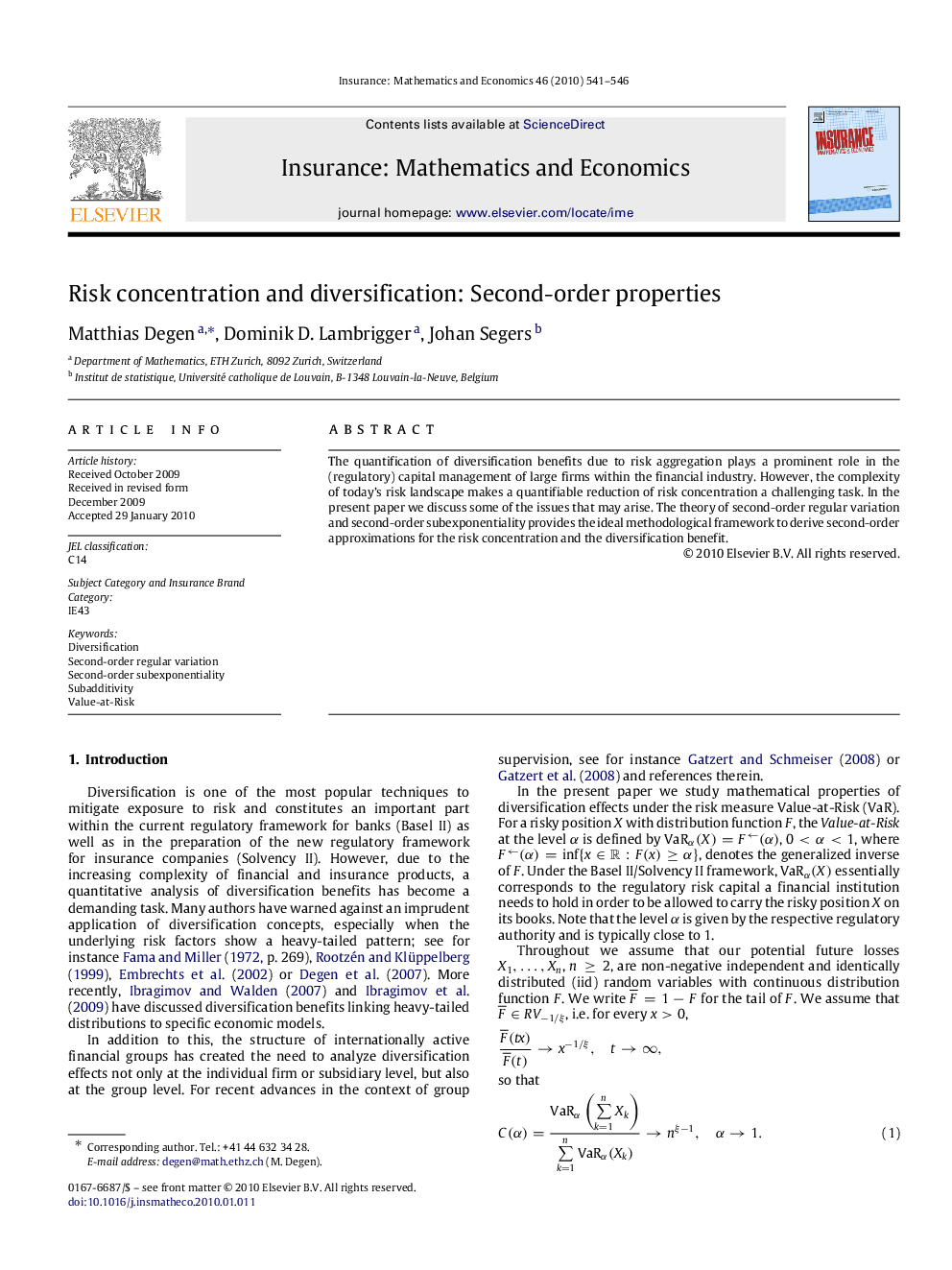| Article ID | Journal | Published Year | Pages | File Type |
|---|---|---|---|---|
| 5077424 | Insurance: Mathematics and Economics | 2010 | 6 Pages |
Abstract
The quantification of diversification benefits due to risk aggregation plays a prominent role in the (regulatory) capital management of large firms within the financial industry. However, the complexity of today's risk landscape makes a quantifiable reduction of risk concentration a challenging task. In the present paper we discuss some of the issues that may arise. The theory of second-order regular variation and second-order subexponentiality provides the ideal methodological framework to derive second-order approximations for the risk concentration and the diversification benefit.
Related Topics
Physical Sciences and Engineering
Mathematics
Statistics and Probability
Authors
Matthias Degen, Dominik D. Lambrigger, Johan Segers,
